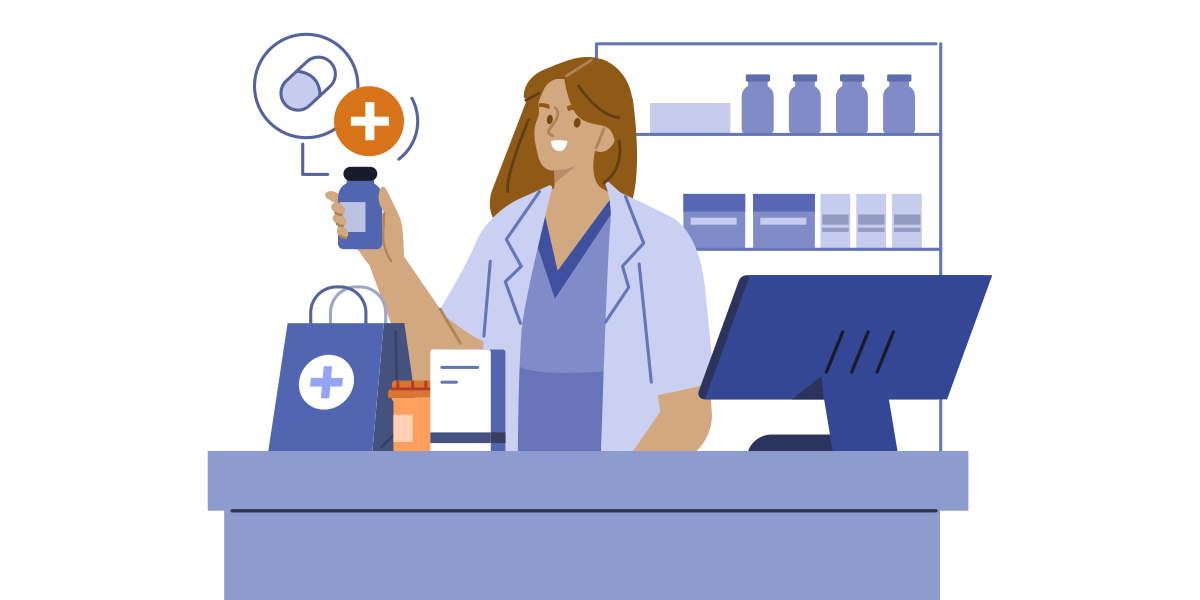

Since the Drug Supply Chain Security Act (DSCSA) regulations for pharmaceutical trading partners have been restructuring supply chain ecosystems in the pharmacy industry, we have been building and testing our DSCSA compliance solution, Pulse by NABP™. This inclusive, accessible, and secure digital platform will simplify the process of achieving compliance for regulators and trading partners. As part of this rollout, we have launched the Pulse Product Verification Service (PVS) to identify potential illegitimate products in the pharmacy supply chain. Regulators in over 30 states, including Drug Enforcement Administration (DEA) field offices, have begun using the Pulse PVS to identify illegitimate products.
We spoke with experts in the field, Jenni Wai, MBA, RPh, Chief Pharmacist of the Ohio Board of Pharmacy, and John Kirtley, PharmD, Executive Director of the Arkansas State Board of Pharmacy, to learn how they have used the PVS to protect patients in their jurisdictions.
1. How is the Pulse PVS changing current procedures for pharmacy regulators?
Jenni Wai: Pulse PVS is a very useful tool for product verification. When we go into a licensed facility and identify a suspect product, we use Pulse PVS to verify the product to ensure it is a legitimate drug in our licensed facilities. The response and results are instant, and it gives our inspectors a starting point to ask relevant questions during an inspection if there are suspect drugs.
John Kirtley: Pulse PVS gives our inspectors/investigators a tool to check suspect products we see in the inspection and investigative processes. This also helps us to get in contact with the correct people at a manufacturer or distributor that we need to talk to about a suspect product. In years past, we could spend a great deal of time just trying to figure out who may or may not be able to help us determine if there was an issue with a product we were seeing, and trying to trace it backwards when working on a case was nearly impossible.
2. How have you successfully used the Pulse PVS?
Jenni Wai: I have used Pulse PVS in assisting various inspections and investigations. Recently, the Ohio Board of Pharmacy has been inspecting many med spas, wellness clinics, and IV hydration clinics. In these facilities, we have identified various illegitimate drugs, including purchases from unlicensed businesses, such as internet and online marketplaces, and counterfeit products, like fillers, botulinum injections for aesthetic uses, and local anesthetics.
We had a case of suspected Botox injection at a clinic. I ran the product information through Pulse PVS, and the results came back instantly as an unverified product by the manufacturer. Through this verification, the manufacturer was notified immediately of the illegitimate product, and the appropriate person at the manufacturer was notified, began their own investigation, and connected with our investigator.
Prior to Pulse PVS, I often had to manually contact the manufacturer and try to get to the right person to conduct a product verification. This process is very time-consuming, and they must verify my credentials to safely provide the information. With Pulse PVS, all parties can be assured that the right person is conducting the verification and that the platform will provide timely results in compliance with the law. Ultimately, we can promptly stop the illegitimate product from being used.
We’ve also assisted in several investigations where drugs were discovered in traffic stops. Several cases of drugs were found in the trunk. We conducted product verification and tracing to identify potential thefts in our drug supply chain.
John Kirtley: We have successfully used Pulse PVS to identify a suspect product that resulted in a multi-state investigation and an emergency suspension of a permit holder’s ability to do business in Arkansas. That investigation had us talking to the right people with the manufacturer the next day, and ultimately also helped to get US Food and Drug Administration (FDA) action on the distributor, which was located in another state.
3. How will the Pulse PVS protect patients?
Jenni Wai: Pulse PVS helps the regulator identify unsafe, counterfeit, or unapproved drugs that may pose harm to the patients. Unapproved drugs are not FDA-approved and have not been tested and may cause adverse events. Many counterfeit drugs have the same packaging and labeling as legitimate, manufactured products, which makes it hard to identify counterfeits on the spot. These fake labels include information and 2D matrix codes like FDA-registered manufacturers. We use the information on the label to conduct product verification in Pulse PVS to identify illegitimate drugs and take them out of the supply chain to keep patients safe.
John Kirtley: This tool will help us as well as pharmacies to have a safety net check to help validate any medications that appear to be suspicious.
4. What opportunities do you see with Pulse in the future?
Jenni Wai: Product tracing in Pulse will be a great feature. We will be using Pulse soon for all inspections, including pharmacies and other licensed entities, to ensure that the product is safe and our licensees are complying with laws and regulations.
Pharmacies and other authorized trading partners can soon use Pulse to conduct their own product verification. Pulse can be an extremely helpful tool for them to get the right person and the right information at the right time.
As we have seen previously, Pulse will also allow us to assist other agencies when encountering drug thefts. Hence, Pulse is helping us keep the streets and patients safe.
John Kirtley: One of the major opportunities I have seen all along for Pulse is that it gives us a tool when working with other law enforcement agencies that see suspect products in their cases that are not controlled substances yet are not in the normal, legal chain of distribution. We have already seen instances of this in our own state and expect that we will see more issues like this.
For more information about Pulse, check out pulse.pharmacy and keep an eye on our latest blog posts for more information.